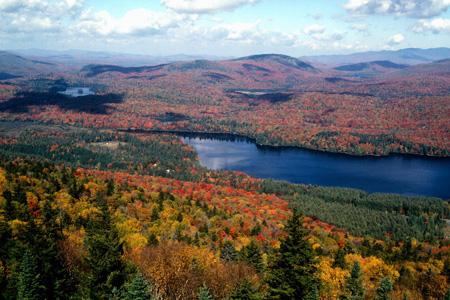Hydroclimatic Effects on Ecosystem Response: A Synthesis of Long-Term Results from Watersheds in the Northeastern United States and Southeastern Canada

Climate variability is already affecting ecosystems throughout the world, including watersheds in the northeastern United States and southeastern Canada. The variability and intensity of climate patterns are expected to increase.
NSRC researchers and 30 collaborators are using the science of hydroclimatology to evaluate the response of stream water chemistry to potential changes in climate using existing long-term records of stream flow, solute chemistry, and meteorology. They developed a comprehensive data set with a focus on sulfur and nitrogen for 20 watershed catchments across southeastern Canada and the northeastern United States. Researchers are using a data base of stream flow, stream chemistry, and climate to make historical comparisons and create a template for future investigations; comparing patterns in stream chemistry across annual, seasonal, monthly, and weekly temporal scales; and evaluating relationships between temporal patterns in stream chemistry and variables such as stream discharge, temperature, precipitation, drought intensity, and snow cover.
They completed analyses of the effect of summer hydrological patterns especially associated with droughts and the effect of seasonal drying on sulphate dynamics in streams. Of the 20 catchments studied, 13 showed effects on stream sulphate levels in response to seasonal drying with an additional two catchments exhibiting a sulphate response for one or more seasons. These results suggest that a shift towards drier summers as a result of climate change could impact sulphate dynamics in a large number of catchments. Researchers continue to study nitrate losses during the snowmelt season.
